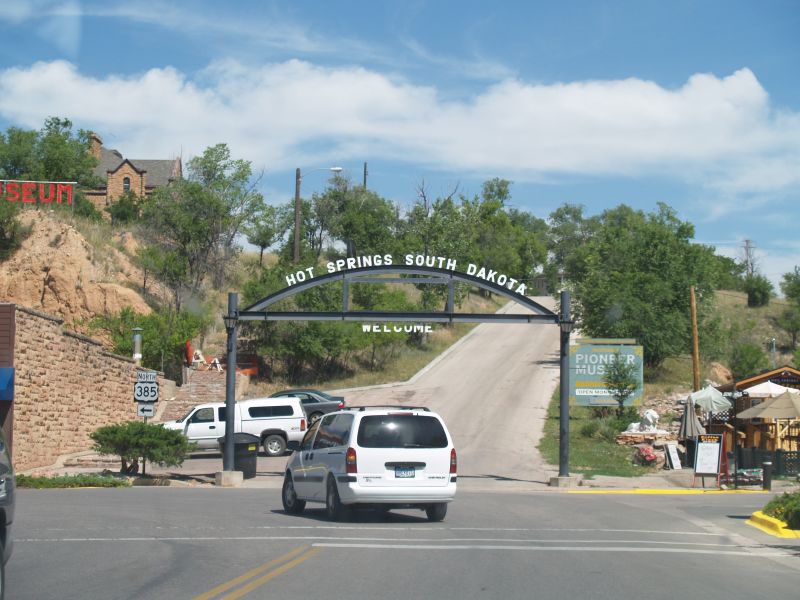Hot Springs
(From South Dakota Historical Collections, Compiled by the South Dakota State Historical Society and the Board of Cultural Preservation. Volume 41, 1982)
The southern portion of the Black Hills contains a reservoir of geothermal energy in which permeable rock containing water lies above a heat source. The heated water rises to a cap of impermeable rock, where fissures allow some of the warm water to flow to the surface as thermal springs. Early inhabitants of the plains region surrounding the Black Hills utilized these hot-water springs to ease bodily pains and treat illnesses. Local legend says the Cheyenne Indians became possessors of the springs, but a battle for custody of the waters took place on a peak overlooking the waters, now named Battle Mountain, adjacent to the city of Hot Springs.
In 1875, scientists Walter P, Jenney and Henry Newton studied this region, and this expedition was the first to produce definite information about the thermal waters in the southern foothills, now in the city of Hot Springs. Lt. Col. Dodge, who accompanied the 1875 expedition, discussed this southern steam in his 1876 publication:
In the fall of 1881, five men gathered in Deadwood, Dakota Territory, to form the Hot Springs Town-Site Company. These five men, Rudolphus D. Jennings, an internal revenue collector, Alexander S. Stewart, a receiver at the United States land office, Ervin G. Dudley, a sawmill owner, L. R. Graves, president of the First National Bank of Deadwood, and Fred T. Evans, freighter/transportation company owner. They had come to the Black Hills of Dakota during the gold rush of the late 1870s.
The five men planned to develop a warm-water resort at the southern end of the Black Hills in an area containing about seventy-five warm-water, mineral –rich springs. These five men and others who followed them built the town of Hot Springs based on the pursuit of health and pleasure, a town unique in the region.
City Information

City of Hot Springs https://hs-sd.org/
Arts/Museums

The Pioneer Museum was originally built in 1893 as a school covering all 12 grades in the region, and now serves as an antiques museum covering many aspects of pioneer life.
Parks/Attractions

The Mammoth Site of Hot Springs is an indoor paleontological dig and museum showcasing mammoths and other animals that roamed the plains hundreds of thousands of years ago.

Black Hills Wild Horse Sanctuary is a

Evans Plunge features indoor hot spring mineral pool and waterslides, weight rooms, and more.